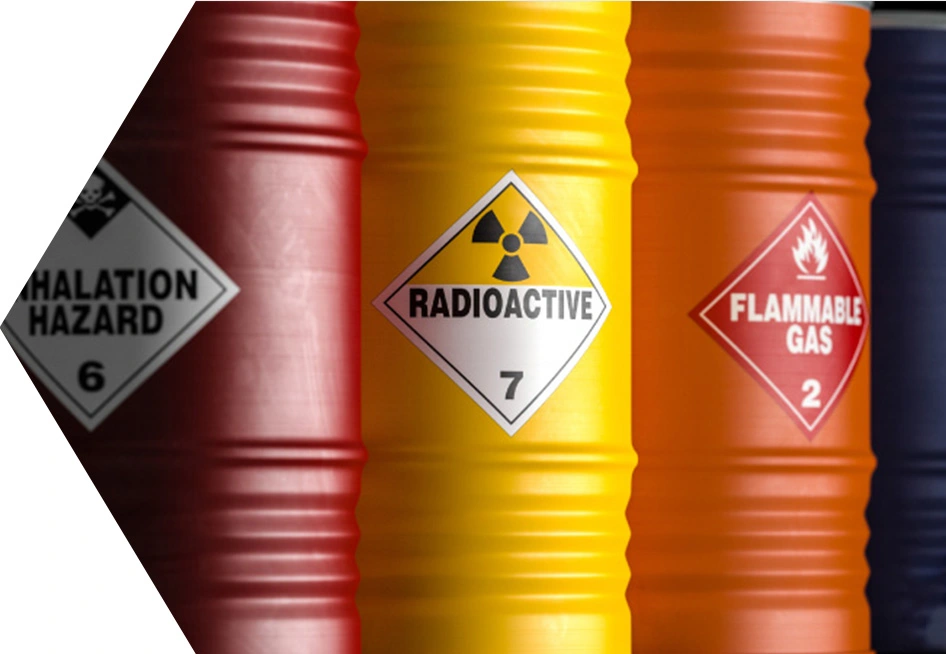Dangerous goods like chemicals, explosives, and liquids that can catch fire are often shipped by air freight. But to keep the cargo and everyone involved in the process safe, special steps must be taken when moving these goods. In this article, we’ll talk about everything you need to know about shipping dangerous goods by air, such as the rules and how to follow them, how to package and label the goods, how to handle and move them, and more.
What are dangerous goods in air freight?
Dangerous goods in air freight are materials or substances that can pose a risk to health, safety, property, or the environment while being shipped by air. These goods are put into different categories based on their properties and level of risk, and there are rules in place to make sure that they are handled and shipped safely.
The three most important things to know about shipping dangerous goods by air are:
- There are nine different types of dangerous goods, from explosives and flammable liquids to toxic and infectious materials.
- Shippers must properly identify and label dangerous goods in accordance with the rules, and they must also give airlines and authorities the proper paperwork.
- Airline companies have rules about how to package, handle, and transport dangerous goods, including limits on the number of items and the routes they can take.
Regulations and Compliance
International laws and rules, like the Technical Instructions for the Safe Transport of Dangerous Goods by Air from the International Civil Aviation Organization (ICAO), say how dangerous goods can be shipped by air. To keep the cargo and the people involved in the transportation process safe, it is important to follow these rules.
Packaging and Labeling
When sending dangerous items by air, it is very important to package and label them correctly. The packaging must be made to withstand the stresses of air travel and keep things from leaking, spilling, or getting damaged in other ways. Labels and markings must also be put on the packages to show what the goods are, what risks they might pose, and how they should be handled.
Handling and Transport
Dangerous goods must be moved and handled by people who have been trained and who know the risks and dangers that come with these goods. To make sure the cargo is safe, you may also need specialized equipment like fire suppression systems and containers that can control the temperature.
Classification of Dangerous Goods
Dangerous goods are put into groups based on what they are, what they do, and how dangerous they are to transport. The classification is based on nine groups: explosives, gases, flammable liquids, flammable solids, oxidizing substances, toxic substances, infectious substances, radioactive materials, and corrosive substances.
Documentation
Documentation is a very important part of flying with dangerous goods. It tells what the goods are, how many of them there are, and how they are classified. The paperwork must be correct and complete, and it must stay with the goods while they are being shipped.
Handling and Loading
When moving and loading dangerous goods, the utmost care must be taken to avoid accidents or other problems. All of the people involved in the process must get the right training on how to handle and move dangerous goods. During the loading process, the goods must be kept safe and away from other cargo.
Emergency Response
In case of an accident with dangerous goods, there must be emergency response plans in place to reduce the risk to people’s health, safety, property, or the environment. To make sure these procedures work, they need to be looked at and changed on a regular basis.
Who is responsible for ensuring the safe transport of dangerous goods by air?
The shipper, the airline, and other people in the chain of transportation are all responsible for making sure that dangerous goods are transported by air in a safe way. Each party is responsible for making sure that dangerous goods are properly identified, categorized, packed, marked, labeled, and documented in accordance with the rules.
The three most important things to know about who is in charge of making sure dangerous goods are transported safely by air are:
- The shipper is responsible for properly classifying, identifying, packaging, marking, labeling, and documenting the dangerous goods and making sure the package meets the regulations.
- The airline is responsible for making sure the dangerous goods are accepted, handled, and transported in accordance with the regulations and for giving the necessary information to the pilot-in-command and ground handling staff.
- Other people in the chain of transportation, like freight forwarders, ground handlers, and airport authorities, are also responsible for making sure that dangerous goods are transported safely.
What are the consequences of non-compliance with dangerous goods regulations?
If you don’t follow the rules about dangerous goods, you could hurt people, property, and the environment, and you could also face legal and financial penalties. The rules are in place to make sure that dangerous goods are handled and moved safely, and not following them can lead to accidents, incidents, and other risks.
The three most important things to know about what will happen if you don’t follow the rules for dangerous goods are:
- Not following the rules can lead to accidents, incidents, and other risks that can hurt people, property, and the environment.
- If you don’t follow the rules, you could get fines, go to jail, or be held responsible for damages in civil court.
- Not following the rules can hurt the business and reputation of the shipper, the airline, and other people in the transportation chain.
How are dangerous goods in air freight classified?
Dangerous goods in air freight are put into nine different classes based on how they behave and how dangerous they are. The purpose of the classification system is to make sure that dangerous goods are handled and shipped safely and that the right steps are taken to lower the risks.
The three most important things to know about how air freight classifies dangerous goods are:
- There are nine types of dangerous goods: explosives, gases, flammable liquids, flammable solids, oxidizing substances, toxic and infectious substances, radioactive materials, corrosive substances, and other dangerous goods.
- Dangerous goods are put into one or more classes based on their properties, such as their ability to catch fire, make people sick, or react with other substances.
- The classification tells you how the dangerous goods need to be packaged, labeled, marked, documented, and handled.
Conclusion
In conclusion, air freight of dangerous goods is a complex process that requires strict adherence to regulations and guidelines to ensure the safety of personnel, the public, and the environment. Hamrahdezh, with its expertise in air freight and import services, can help clients navigate the intricacies of this transportation mode and ensure the secure and efficient delivery of their cargo. With trained personnel and specialized equipment, Hamrahdezh can assist clients with compliance, packaging, labeling, and emergency response. Contact Hamrahdezh today to learn more about how they can assist with air freight and import services.




